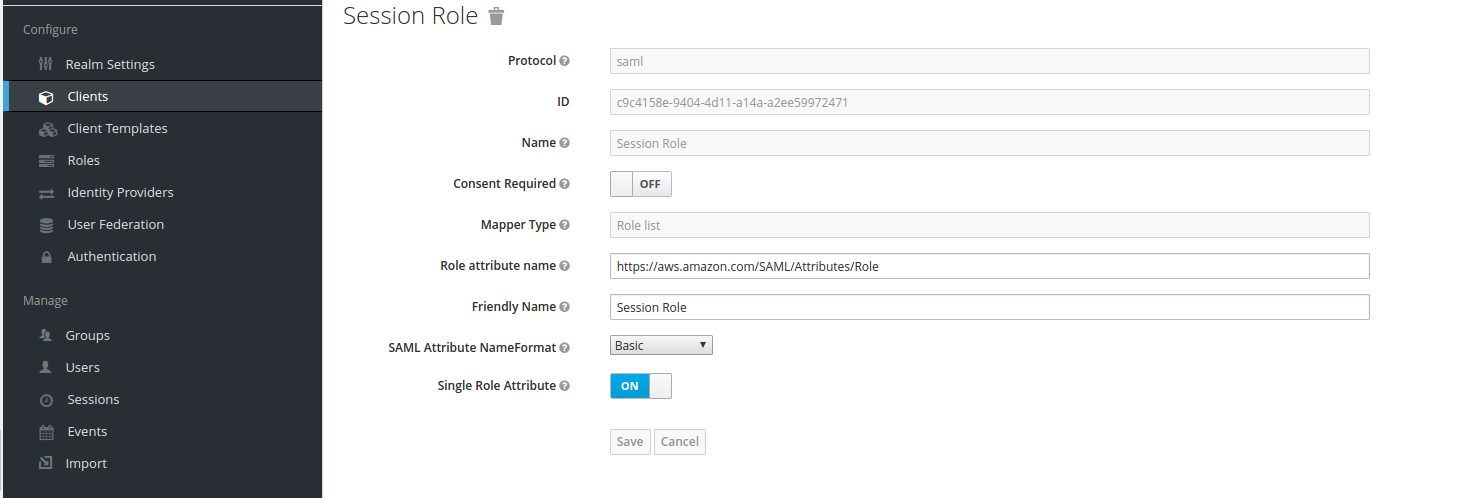Kubernetes does not have its own user management and relies on external providers like Keycloak. First we need to integrate an OpeniD prodiver (for me keycloak) with the kubernetes api server.
nano /etc/kubernetes/manifests/kube-apiserver.yaml
...
command:
- /hyperkube
- apiserver
- --advertise-address=10.10.40.30
...
- --oidc-issuer-url=https://192.168.56.162:8443/auth/realms/mydomain
- --oidc-client-id=k8s
- --oidc-username-claim=email
- --oidc-groups-claim=groups
# for self sign cert or custom ca
- --oidc-ca-file=/etc/kubernetes/pki/rootca.pem
...
systemctl restart docker kubelet
Make you have working ingress controller is also installed on your kubernetes cluster.you can install the same using helm or maually.
helm install stable/nginx-ingress \
--name nginx-ingress \
--namespace=nginx-ingress \
--set rbac.create=true \
--set controller.kind=DaemonSet \
--set controller.hostNetwork=true \
--set controller.daemonset.useHostPort=true \
--set controller.stats.enabled=true \
--set controller.metrics.enabled=true
kubectl --namespace nginx-ingress get services -o wide -w nginx-ingress-controller
kubectl create secret tls default-ingress-tls --key /path/to/private.pem --cert /path/to/cert.pem --namespace nginx-ingressWe need an authentication proxy before the dashboard. I will use keycloak-gatekeeper for that purpose.
nano proxy-deplayment.yaml
---
apiVersion: apps/v1
kind: Deployment
metadata:
name: dasboard-proxy
labels:
app.kubernetes.io/name: dasboard-proxy
namespace: kubernetes-dashboard
spec:
replicas: 1
selector:
matchLabels:
app.kubernetes.io/name: dasboard-proxy
template:
metadata:
labels:
app.kubernetes.io/name: dasboard-proxy
spec:
containers:
- name: dasboard-proxy
image: "keycloak/keycloak-gatekeeper:latest"
command:
- /opt/keycloak-gatekeeper
- --discovery-url=https://192.168.56.162:8443/auth/realms/mydomain/.well-known/openid-configuration
- --client-id=k8s
- --client-secret=43219919-0904-4338-bc0f-c986e1891a7a
- --listen=0.0.0.0:3000
- --encryption-key=AgXa7xRcoClDEU0ZDSH4X0XhL5Qy2Z2j
- --redirection-url=https://dashboard.nrathi.io
- --enable-refresh-tokens=true
- --upstream-url=https://kubernetes-dashboard
# debug:
#- --upstream-url=http://echo:8080
# for self sign cert or custom ca
#- --skip-upstream-tls-verify
#- --skip-openid-provider-tls-verify
ports:
- name: http
containerPort: 3000
protocol: TCP
---
apiVersion: v1
kind: Service
metadata:
name: dasboard-proxy
labels:
app.kubernetes.io/name: dasboard-proxy
namespace: kubernetes-dashboard
spec:
type: ClusterIP
ports:
- port: 3000
targetPort: http
protocol: TCP
name: http
selector:
app.kubernetes.io/name: dasboard-proxy
---
apiVersion: extensions/v1beta1
kind: Ingress
metadata:
name: dasboard-proxy
annotations:
kubernetes.io/ingress.class: nginx
nginx.ingress.kubernetes.io/proxy-buffer-size: "64k"
cert-manager.io/cluster-issuer: ca-issuer
namespace: kubernetes-dashboard
spec:
tls:
- hosts:
- dashboard.nrathi.io
secretName: dasboard-proxy-tls
rules:
- host: dashboard.devopstales.intra
http:
paths:
- backend:
serviceName: dasboard-proxy
servicePort: 3000
Now you can login at dashboard.devopstales.intra but you haven’t got any privileges so lets create. some.
nano devops-group-rbac.yaml
---
apiVersion: rbac.authorization.k8s.io/v1
kind: ClusterRoleBinding
metadata:
name: devops-cluster-admin
namespace: kubernetes-dashboard
roleRef:
apiGroup: rbac.authorization.k8s.io
kind: ClusterRole
name: cluster-admin
subjects:
- apiGroup: rbac.authorization.k8s.io
kind: Group
name: devopstales
---
kind: RoleBinding
apiVersion: rbac.authorization.k8s.io/v1
subjects:
- kind: User
name: "devopstales"
namespace: "kube-system"
roleRef:
apiGroup: rbac.authorization.k8s.io
kind: ClusterRole
name: cluster-admin












